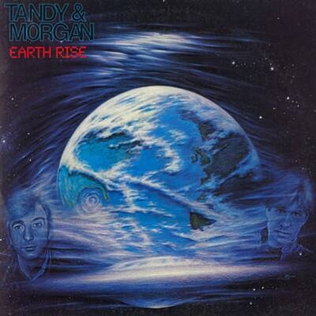Alien primarily refers to:
Phase or phases may refer to:
Gaia is a primordial deity and the personification of the Earth in Greek mythology.
A spider is a type of arthropod.
The Moon is Earth's only natural satellite.
An empire is a group of states or peoples under centralized rule.
Halo, halos or haloes usually refer to:
Creep, Creeps or CREEP may refer to:
Aether, æther or ether may refer to:
Deliverance is a 1972 film directed by John Boorman.

"Space Truckin'" is a song by British hard rock band Deep Purple. It is the seventh and final track on the Machine Head album and its lyrics talk of space travel.

Earthrise is a photograph of Earth and some of the Moon's surface that was taken from lunar orbit by astronaut William Anders on December 24, 1968, during the Apollo 8 mission. Nature photographer Galen Rowell described it as "the most influential environmental photograph ever taken".
Breakout or Break Out may refer to:

Earthrise is a concept album originally released in 1985 in the UK, written by former Electric Light Orchestra (ELO) member Richard Tandy and David Morgan, both from Birmingham, UK. Morgan also wrote songs for 1960s band The Move. The album was inspired by the iconic photo of the earth taken during the Apollo 8 mission.

Music in space is music played in or broadcast from a spacecraft in outer space. The first ever song that was performed in space was a Ukrainian song “Watching the sky...” sang on 12 August 1962 by Pavlo Popovych, cosmonaut from Ukraine at a special request of Serhiy Korolyov, Soviet rocket engineer and spacecraft designer from Ukraine. According to the Smithsonian Institution, the first musical instruments played in outer space were an 8-note Hohner "Little Lady" harmonica and a handful of small bells carried by American astronauts Wally Schirra and Thomas P. Stafford aboard Gemini 6A. Upon achieving a space rendezvous in Earth orbit with their sister ship Gemini 7 in December 1965, Schirra and Stafford played a rendition of "Jingle Bells" over the radio after jokingly claiming to have seen an unidentified flying object piloted by Santa Claus. The instruments had been smuggled on-board without NASA's knowledge, leading Mission Control director Elliot See to exclaim "You're too much" to Schirra after the song. The harmonica was donated to the Smithsonian by Schirra in 1967, with his note that it "...plays quite well".
This page is based on this
Wikipedia article Text is available under the
CC BY-SA 4.0 license; additional terms may apply.
Images, videos and audio are available under their respective licenses.



